In disc golf, accurate judgment of throwing distances is the foundation of scoring well. No matter if you're an amateur or professional, knowing the course distances can really contribute to shot strategic planning. Disc golf rangefinders are becoming more and more a player's go-to tool, serving as an essential helper. Let's know more about how they function in this article!
Part 1. What is a Disc Golf Rangefinder?
A disc golf rangefinder is a portable device used to measure distances to targets, typically employing laser or GPS technology to instantly measure how far a disc travels from basket, obstacles, or significant points on the course.
By having accurate distance information readily available to them, players can make informed choices regarding disc selection, throwing force control and trajectory regulation and ultimately improve accuracy. For golfers seeking consistency of performance and strategic gameplay optimization, a rangefinder is definitely an essential tool to enhance their game.
Part 2. Types of Disc Golf Rangefinders
In disc golf, the right rangefinder selection can introduce accuracy and strategy into the game. Both models have their respective strengths and weaknesses, so knowledge of their features can allow players to select the most suitable one depending on course conditions and personal requirements. What follows is an in-depth guide to the two fundamental types:
1. Handheld Laser Rangefinder
Pros: Laser rangefinders are precise in their measurement and very easy to use. They are suitable for short to medium-range distance measuring, allowing players to quickly and accurately measure distances to the basket or to the closest hazards.
Cons: They are more expensive, and their effectiveness could be affected by light conditions or environmental factors such as fog, rain, or dense foliage.

2. GPS Rangefinder
Pros: GPS rangefinders provide detailed course data, like distances to the basket, hazards, and other strategic points. They are perfect for overall strategy planning and learning the layout of the course.
Cons: Accuracy tends to be slightly worse than with laser rangefinders, and they rely on satellite signals, which can be weak or nonexistent in highly wooded areas or areas with bad reception.
In choosing a rangefinder, players need to consider the course conditions, personal needs, and budget. There are even experienced players who bring along both models to gain optimum accuracy and strategic data.
Part 3. Why You Need a Disc Golf Rangefinder
Accurate distance measurement in disc golf is at the heart of improving throwing accuracy, mastering disc selection, and enhancing strategic play. Here's why you need to have a disc golf rangefinder:
Improve Throwing Accuracy
Being aware of the exact distance to the basket or obstacles allows players to confidently make the right throwing style. Having accurate distance information takes away guesswork, reduces errors, and encourages consistency, especially on challenging holes or in competition.
Optimize Disc Selection
Different discs are designed for distinct distances and trajectories. A rangefinder provides accurate distance measurement, which enables players to choose the most suitable disc for every throw. This makes every throw effective and efficient, improving overall performance.
Save Practice Time
Instead of having to estimate distances, players can get accurate distance measurements with a rangefinder. This enables more focused and efficient practice sessions, as players can more quickly and accurately fine-tune their throwing skills.
Enhance Strategic Play
Knowing the course layout and the distance between key points allows players to map out multi-throw strategies. Knowing the distance between hazards and the basket allows players to make better decisions on each hole, maximizing scoring chances and improving overall game strategy.
A disc golf rangefinder is not just a tool, it's a way to bring skill and strategy to the next level and allow players of all abilities to play smarter and throw more accurately.

Part 4. Key Features to Look for When Choosing a Disc Golf Rangefinder
When choosing a disc golf rangefinder, knowing the most significant features is crucial. Different functions directly affect usability, simplicity, and performance during practice sessions or competitions. Understanding these basic specs enables players to choose the most suitable device according to their needs and the playing conditions, maximizing throwing efficiency and strategic play.
Distance Accuracy
Accuracy is likely the most important indicator of a rangefinder's quality. For disc golf, a measurement error of ±0.5 meters is ideal. High accuracy ensures that players can rely on the data to select the right disc and throwing technique, reducing mistakes and improving consistency.
Measurement Range
Courses also vary in length, so it's ideal to select a rangefinder that can cover the entire course. A model with a sufficient measurement range ensures players can measure distances on long holes just as accurately as on short holes, making it compatible with different course layouts.
Waterproofing and Durability
Disc golf is an outdoor activity for the most part, and water, dust, and impact resistance is crucial. A waterproof and rugged rangefinder will withstand rain, rough terrain, or the odd accidental drop, continuing to perform consistently through every round.
Portability
Units that are lightweight and easy to carry reduce the burden while playing. Compact and ergonomic construction allows for players to quickly use the rangefinder without interrupting focus or rhythm during play.
Additional Features
More advanced rangefinders can also include other features such as obstacle detection, disc flight simulation, or even full course layout displays. These features provide strategic benefits by enabling players to more effectively plan multi-throw strategies and make smarter decisions on each hole.
Choosing a rangefinder with the right combination of features ensures that players can maximize both accuracy and strategic advantage on the course.
Part 5. Recommended Disc Golf Rangefinder: GS91W Rechargeable Laser Golf Rangefinder
For disc golfers seeking a reliable rangefinder, Gogogo Sport Vpro GS91W Rechargeable Laser Golf Rangefinder is an ideal solution. Compact but powerful, its combination of accuracy, usability, and durability make it suitable for disc golf, golf, hunting or other applications.

Key Features:
- Long Range & High Accuracy: Boasting a long distance of 1,400 yards and ±0.5-yard accuracy, the GS91W offers precise measurements for every throw. The flagpole lock is effective up to 250 yards, and the flag lock up to 300 yards, enabling golfers to target baskets with confidence.
- Slope Adjustment & Rule Compliance: Slope compensation can be turned off for tournament play, in strict adherence to USGA Rule 4.3a. This prepares your device for competition.
- Rechargeable Battery: Driven by a 750 mAh lithium-ion battery, it delivers 70+ rounds on a single charge. USB-C fast charging to 80% in just 45 minutes keeps you on the course for longer.
- Built-In Magnet: The super strong built-in magnet allows for secure metal surface or cart attachment, even on an incline up to 45°, and is tested to over 10,000 attach/detach cycles.
- Multi-Unit Display: Quickly change between units depending on activity: 5–1400 yards for golf, 5–1280 meters for hunting, and 15–4200 feet for disc golf.
- Magnification: 6x magnification offers clear images of distant targets, enhancing aiming and accuracy.
Part 6. Tips for Using a Disc Golf Rangefinder
Learning how to utilize a disc golf rangefinder allows golfers not only to obtain accurate distance measurements but also use that information in effective throwing methods and performance improvements.
Implementing rangefinder use correctly both during practice sessions and competition can result in stability, precision, and increased scoring ability. The following are some of the practical applications:
Maintain Stability
While measuring, hold your hands as still as possible to get proper readings. Even slight movement can compromise laser or GPS precision, particularly at greater distances. Placing the rangefinder on a steady surface or on a tripod can also enhance accuracy for those important shots.
Combine with Practice
A rangefinder provides precise distance information but needs to be complemented by actual throwing practice. Become accustomed to how your discs fly at different distances. With known distances coupled with repeated practice, you can modulate power, angle, and release for repeatable throws.
Consider Environmental Factors
Environmental conditions such as rain, fog, bright sunlight, or reflective surfaces can affect laser readings. GPS devices may also be impacted by dense tree cover or weak satellite signals. Adjust your usage accordingly to ensure reliable measurements when needed.
Apply Measurements Strategically
Use distance information to guide disc selection and choose best throwing routes. Knowing exact distances to hazards or the basket allows for smarter multi-throw planning, reducing risks and maximizing scoring potential.
Effectively using a disc golf rangefinder is about more than just taking measurements. It is about integrating information into practice and strategy to play smarter, more accurately, and with greater confidence on the course.

Part 7. Are Disc Golf Rangefinders Legal in Competition?
Most golfers would like to know: "Are rangefinders legal in disc golf competitions?" According to the Professional Disc Golf Association (PDGA) rules:
Official Competitions:
Electronic devices that gauge or give distance information, including rangefinders, generally are not permitted unless the tournament rules expressly allow their use. A rangefinder employed without approval during an official competition can result in penalty or disqualification.
Casual or Non-Official Play:
Practice rounds or friendly competitions typically have no such restrictions on rangefinder use. Players may use them to make practice more effective, strategy better informed, and to learn course distances better.
Recommendation:
Players should familiarize themselves with the rules of an event prior to competing in official events. Understanding the rules ensures correct use of the rangefinder and avoids potential penalties.
Example of Rule-Compliant Technology:
Some rangefinders, like the Gogogo Sport Vpro, feature a Rule-Compliant Slope-Off Mode to comply with USGA Rule 4.3a and allow players to utilize it during tournaments where slope compensation is prohibited while still taking advantage of its accurate measurement capabilities.
Final Words
Rangefinders for disc golf are essential tools for improving throwing accuracy and strategic play, helping golfers gain better sense of course distances, consolidate strategies, and hold more targeted practice sessions.
While their use may be restricted in official matches, rangefinders are still useful tools when used properly for practice or casual play - you could make your disc golf experience more precise, strategic and professional with an appropriate rangefinder and user skills.

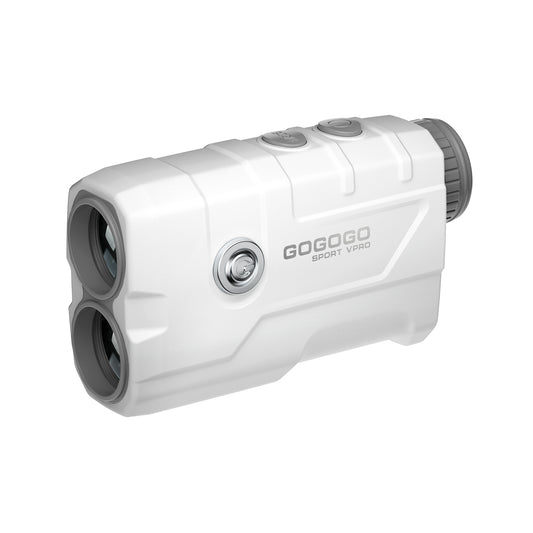
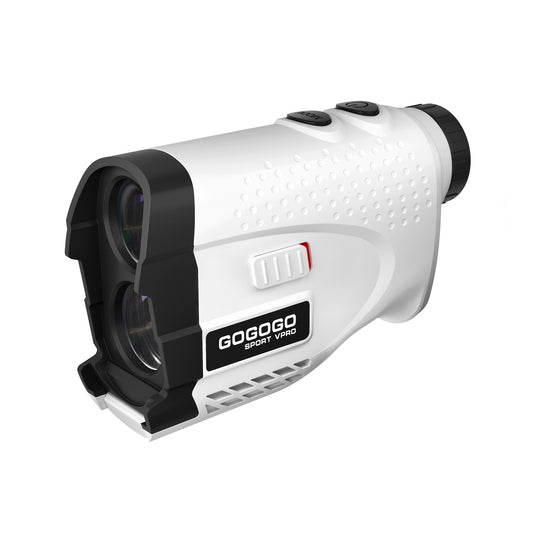
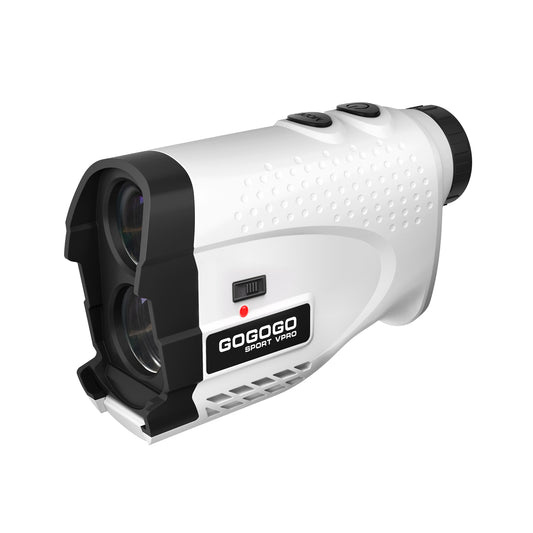
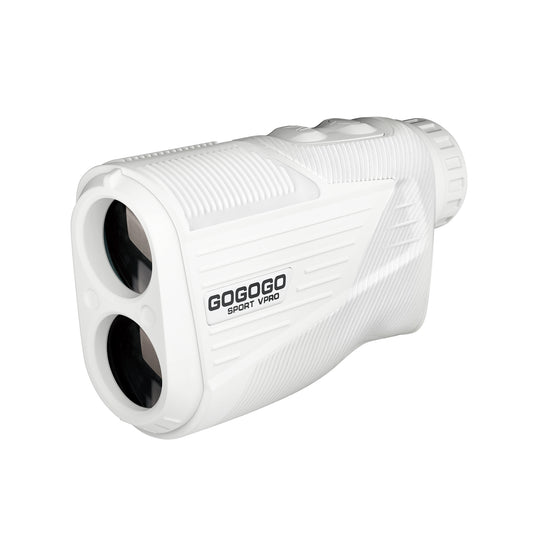
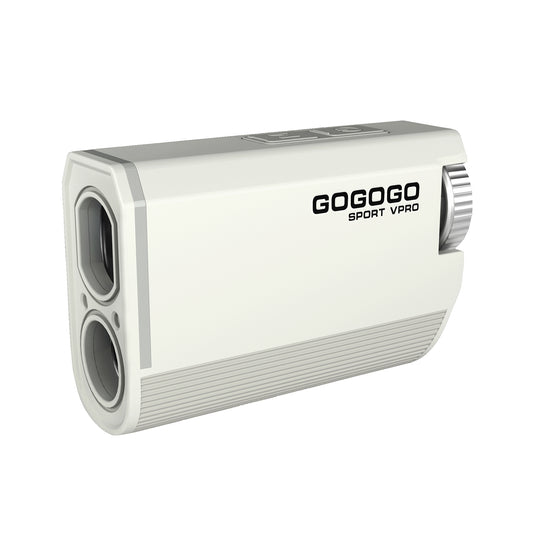
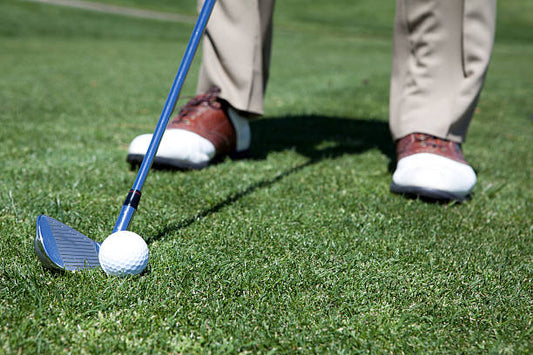
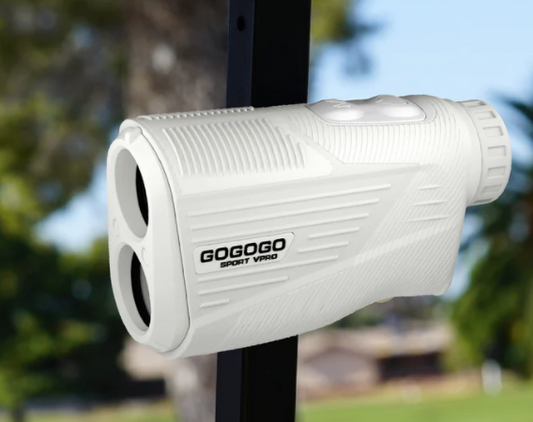

![[2025] The Ultimate Guide to Pinseeker Rangefinders for Golfers](http://gogogosport.com/cdn/shop/articles/gogogo_sport_vpro_pinseeker_rangefinder.png?v=1757993796&width=533)